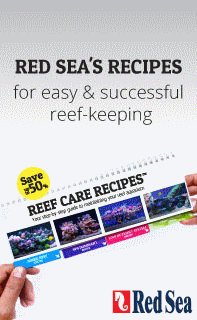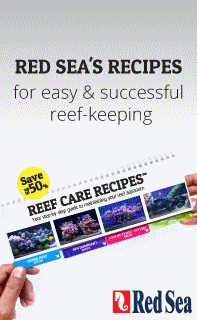[DISCUSSION] Starting your first marine tank. Overview to plan your equipment and budget (Part 1)
-
Similar Content
-
Topics
-
Latest Update
-
0
专业学历认证办理加州大学河滨分校毕业证Q微707091118诚信办理UCR文凭毕业证成绩单,职业办理美国大学留服认证 University of California Riverside
专业学历认证办理加州大学河滨分校毕业证Q微707091118诚信办理UCR文凭毕业证成绩单,职业办理美国大学留服认证 University of California Riverside美国,加拿大,澳洲,英国毕业证成绩单QQ微信707091118留服认证办理,留信认证制作国外留学毕业证成绩单购买国外留学学位证办理真实可查留学归国证明,办真实存档留信网认证大使馆认证学历认证和教育部认证,以下国家都可办理:办理英国留学归国证明,美国留学归国证明,加拿大留学归国证明,澳洲留学归国证明,新西兰留学归国证明,新加坡留学归国证明,德国留学归国证明,法国留学归国证明,荷兰留学归国证明,意大利留学归国证明,奥地利留学归国证明 一、办理毕业证成绩单(学校原版1:1真制作) 二、使馆认证(留学回国人员证明,大使馆存档可查,查到后付款) 三、教育部学历认证(中国教育部留服中心存档可查,查到后付款) 四、可提供钢印,激凸,烫金,烫银,激光标,水印等防伪工艺 五、诚招各地区中介代理,合作共赢!如果您有兴趣,欢迎您的加入 ———————————————————————————- 如果您是以下情况: 2、挂科多门,拿不到学位证书; 3、论文没过,只有个diploma; 4、留学院校不被教育部认可; 5、留学时间不足; 6、第二国拿第三国文凭; 7、认证材料有缺失; 8、急需国外学历认证书; 9、其他问题。 我们公司都能竭诚为您解决实际问题! ———————————————————————————- 合理推荐业务: 1.如果您只是为了的应付父母亲戚朋友,那么办理一份文凭即可 2.如果您是为了回国找工作,只是进私营企业或者外企,那么办理一份文凭即可,因为私营企业或者外企是不能 查询文凭真假的! 3.如果您是要进国企 银行 事业单位 考公务员等就需办理真实教育部学历认证! ———————————————————————————- 【教育部学历认证的用途】: 如果您计划在国内发展,那么办理国内教育部学历认证是必不可少的,由于国外文凭在国内无法辨别真假,教育部 认证是对您国外所获学历真实性,合法性的一种鉴别方式,事业性用人单位如银行,国企,公务员,在您应聘 时都会需要您提供这个认证。 【回国证明的用途】: 《留学回国人员证明》是国家为了鼓励留学人员回国发展的一项优待政策,留学人员持有此证明,可以享受购买汽 车免税,在国内证明留学身份、联系工作、创办企业、大城市落户口、创业申请国内各类基金等多项 优惠政策。 更多关于办理国外文凭学历请咨询学历顾问BOSSQ薇707091118 留学生提供以下服务: 一、办理毕业证成绩单(学校原版1:1真制作) 二、使馆认证(留学回国人员证明,大使馆存档可查,查到后付款) 三、教育部学历认证(中国教育部留服中心存档可查,查到后付款) 四、可提供钢印,激凸,烫金,烫银,激光标,水印等防伪工艺 五、诚招各地区中介代理,合作共赢!如果您有兴趣,欢迎您的加入 农业科学院、艺术与建筑学院、商学院、交流学院、地球及物质科学院、教育学院、工程学院、健康与人类发展学院、信息工程与科学学院、人文学院、护理学院、科学学院等。学校的教育学院排名在全美前十名,工学院排名在前十五名,且继续攀升中。纽约大学为学生们提供本科、硕士及博士学位。学校的专业课程包括:会计学、MBA、财务、教育、建筑工程、经济、医学、护理、文学、音乐、生物学、统计学、美术、电子工程、天文学、农业、环境污染控制、历史、电气工程、生物工程、建筑设计、工商管理、材料科学、机械工程、航天工程、土木工程、数学、化学、英语、社会科学、心理学、戏剧、市场营销、机械工程、计算机科学、物理学、人工智能、商科、金融专业 ———————————————————————————- 如果您是以下情况: 1、未能顺利毕业; 2、挂科多门,拿不到学位证书; 3、论文没过,只有个diploma; 4、留学院校不被教育部认可; 5、留学时间不足; 6、第二国拿第三国文凭; 7、认证材料有缺失; 8、急需国外学历认证书; 9、其他问题。 我们公司都能竭诚为您解决实际问题! ———————————————————————————- 合理推荐业务: 1.如果您只是为了的应付父母亲戚朋友,那么办理一份文凭即可 2.如果您是为了回国找工作,只是进私营企业或者外企,那么办理一份文凭即可,因为私营企业或者外企是不能 查询文凭真假的! 3.如果您是要进国企 银行 事业单位 考公务员等就需办理真实教育部学历认证! ———————————————————————————- 【教育部学历认证的用途】: 如果您计划在国内发展,那么办理国内教育部学历认证是必不可少的,由于国外文凭在国内无法辨别真假,教育部 认证是对您国外所获学历真实性,合法性的一种鉴别方式,事业性用人单位如银行,国企,公务员,在您应聘 时都会需要您提供这个认证。 【回国证明的用途】: 《留学回国人员证明》是国家为了鼓励留学人员回国发展的一项优待政策,留学人员持有此证明,可以享受购买汽 车免税,在国内证明留学身份、联系工作、创办企业4G1、大城市落户口、创业申请国内各类基金等多项 优惠政策。 -
0
专业学历认证办理加州大学欧文分校毕业证Q微707091118诚信办理UCI文凭毕业证成绩单,职业办理美国大学留服认证 University of California Irvine
专业学历认证办理加州大学欧文分校毕业证Q微707091118诚信办理UCI文凭毕业证成绩单,职业办理美国大学留服认证 University of California Irvine美国,加拿大,澳洲,英国毕业证成绩单QQ微信707091118留服认证办理,留信认证制作国外留学毕业证成绩单购买国外留学学位证办理真实可查留学归国证明,办真实存档留信网认证大使馆认证学历认证和教育部认证,以下国家都可办理:办理英国留学归国证明,美国留学归国证明,加拿大留学归国证明,澳洲留学归国证明,新西兰留学归国证明,新加坡留学归国证明,德国留学归国证明,法国留学归国证明,荷兰留学归国证明,意大利留学归国证明,奥地利留学归国证明 一、办理毕业证成绩单(学校原版1:1真制作) 二、使馆认证(留学回国人员证明,大使馆存档可查,查到后付款) 三、教育部学历认证(中国教育部留服中心存档可查,查到后付款) 四、可提供钢印,激凸,烫金,烫银,激光标,水印等防伪工艺 五、诚招各地区中介代理,合作共赢!如果您有兴趣,欢迎您的加入 ———————————————————————————- 如果您是以下情况: 2、挂科多门,拿不到学位证书; 3、论文没过,只有个diploma; 4、留学院校不被教育部认可; 5、留学时间不足; 6、第二国拿第三国文凭; 7、认证材料有缺失; 8、急需国外学历认证书; 9、其他问题。 我们公司都能竭诚为您解决实际问题! ———————————————————————————- 合理推荐业务: 1.如果您只是为了的应付父母亲戚朋友,那么办理一份文凭即可 2.如果您是为了回国找工作,只是进私营企业或者外企,那么办理一份文凭即可,因为私营企业或者外企是不能 查询文凭真假的! 3.如果您是要进国企 银行 事业单位 考公务员等就需办理真实教育部学历认证! ———————————————————————————- 【教育部学历认证的用途】: 如果您计划在国内发展,那么办理国内教育部学历认证是必不可少的,由于国外文凭在国内无法辨别真假,教育部 认证是对您国外所获学历真实性,合法性的一种鉴别方式,事业性用人单位如银行,国企,公务员,在您应聘 时都会需要您提供这个认证。 【回国证明的用途】: 《留学回国人员证明》是国家为了鼓励留学人员回国发展的一项优待政策,留学人员持有此证明,可以享受购买汽 车免税,在国内证明留学身份、联系工作、创办企业、大城市落户口、创业申请国内各类基金等多项 优惠政策。 更多关于办理国外文凭学历请咨询学历顾问BOSSQ薇707091118 留学生提供以下服务: 一、办理毕业证成绩单(学校原版1:1真制作) 二、使馆认证(留学回国人员证明,大使馆存档可查,查到后付款) 三、教育部学历认证(中国教育部留服中心存档可查,查到后付款) 四、可提供钢印,激凸,烫金,烫银,激光标,水印等防伪工艺 五、诚招各地区中介代理,合作共赢!如果您有兴趣,欢迎您的加入 农业科学院、艺术与建筑学院、商学院、交流学院、地球及物质科学院、教育学院、工程学院、健康与人类发展学院、信息工程与科学学院、人文学院、护理学院、科学学院等。学校的教育学院排名在全美前十名,工学院排名在前十五名,且继续攀升中。纽约大学为学生们提供本科、硕士及博士学位。学校的专业课程包括:会计学、MBA、财务、教育、建筑工程、经济、医学、护理、文学、音乐、生物学、统计学、美术、电子工程、天文学、农业、环境污染控制、历史、电气工程、生物工程、建筑设计、工商管理、材料科学、机械工程、航天工程、土木工程、数学、化学、英语、社会科学、心理学、戏剧、市场营销、机械工程、计算机科学、物理学、人工智能、商科、金融专业 ———————————————————————————- 如果您是以下情况: 1、未能顺利毕业; 2、挂科多门,拿不到学位证书; 3、论文没过,只有个diploma; 4、留学院校不被教育部认可; 5、留学时间不足; 6、第二国拿第三国文凭; 7、认证材料有缺失; 8、急需国外学历认证书; 9、其他问题。 我们公司都能竭诚为您解决实际问题! ———————————————————————————- 合理推荐业务: 1.如果您只是为了的应付父母亲戚朋友,那么办理一份文凭即可 2.如果您是为了回国找工作,只是进私营企业或者外企,那么办理一份文凭即可,因为私营企业或者外企是不能 查询文凭真假的! 3.如果您是要进国企 银行 事业单位 考公务员等就需办理真实教育部学历认证! ———————————————————————————- 【教育部学历认证的用途】: 如果您计划在国内发展,那么办理国内教育部学历认证是必不可少的,由于国外文凭在国内无法辨别真假,教育部 认证是对您国外所获学历真实性,合法性的一种鉴别方式,事业性用人单位如银行,国企,公务员,在您应聘 时都会需要您提供这个认证。 【回国证明的用途】: 《留学回国人员证明》是国家为了鼓励留学人员回国发展的一项优待政策,留学人员持有此证明,可以享受购买汽 车免税,在国内证明留学身份、联系工作、创办企业4G1、大城市落户口、创业申请国内各类基金等多项 优惠政策。 -
0
专业学历认证办理南加州大学毕业证Q微707091118诚信办理南加大USC文凭毕业证成绩单,职业办理美国大学留服认证University of Southern California
专业学历认证办理南加州大学毕业证Q微707091118诚信办理南加大USC文凭毕业证成绩单,职业办理美国大学留服认证University of Southern California美国,加拿大,澳洲,英国毕业证成绩单QQ微信707091118留服认证办理,留信认证制作国外留学毕业证成绩单购买国外留学学位证办理真实可查留学归国证明,办真实存档留信网认证大使馆认证学历认证和教育部认证,以下国家都可办理:办理英国留学归国证明,美国留学归国证明,加拿大留学归国证明,澳洲留学归国证明,新西兰留学归国证明,新加坡留学归国证明,德国留学归国证明,法国留学归国证明,荷兰留学归国证明,意大利留学归国证明,奥地利留学归国证明 一、办理毕业证成绩单(学校原版1:1真制作) 二、使馆认证(留学回国人员证明,大使馆存档可查,查到后付款) 三、教育部学历认证(中国教育部留服中心存档可查,查到后付款) 四、可提供钢印,激凸,烫金,烫银,激光标,水印等防伪工艺 五、诚招各地区中介代理,合作共赢!如果您有兴趣,欢迎您的加入 ———————————————————————————- 如果您是以下情况: 2、挂科多门,拿不到学位证书; 3、论文没过,只有个diploma; 4、留学院校不被教育部认可; 5、留学时间不足; 6、第二国拿第三国文凭; 7、认证材料有缺失; 8、急需国外学历认证书; 9、其他问题。 我们公司都能竭诚为您解决实际问题! ———————————————————————————- 合理推荐业务: 1.如果您只是为了的应付父母亲戚朋友,那么办理一份文凭即可 2.如果您是为了回国找工作,只是进私营企业或者外企,那么办理一份文凭即可,因为私营企业或者外企是不能 查询文凭真假的! 3.如果您是要进国企 银行 事业单位 考公务员等就需办理真实教育部学历认证! ———————————————————————————- 【教育部学历认证的用途】: 如果您计划在国内发展,那么办理国内教育部学历认证是必不可少的,由于国外文凭在国内无法辨别真假,教育部 认证是对您国外所获学历真实性,合法性的一种鉴别方式,事业性用人单位如银行,国企,公务员,在您应聘 时都会需要您提供这个认证。 【回国证明的用途】: 《留学回国人员证明》是国家为了鼓励留学人员回国发展的一项优待政策,留学人员持有此证明,可以享受购买汽 车免税,在国内证明留学身份、联系工作、创办企业、大城市落户口、创业申请国内各类基金等多项 优惠政策。 更多关于办理国外文凭学历请咨询学历顾问BOSSQ薇707091118 留学生提供以下服务: 一、办理毕业证成绩单(学校原版1:1真制作) 二、使馆认证(留学回国人员证明,大使馆存档可查,查到后付款) 三、教育部学历认证(中国教育部留服中心存档可查,查到后付款) 四、可提供钢印,激凸,烫金,烫银,激光标,水印等防伪工艺 五、诚招各地区中介代理,合作共赢!如果您有兴趣,欢迎您的加入 农业科学院、艺术与建筑学院、商学院、交流学院、地球及物质科学院、教育学院、工程学院、健康与人类发展学院、信息工程与科学学院、人文学院、护理学院、科学学院等。学校的教育学院排名在全美前十名,工学院排名在前十五名,且继续攀升中。纽约大学为学生们提供本科、硕士及博士学位。学校的专业课程包括:会计学、MBA、财务、教育、建筑工程、经济、医学、护理、文学、音乐、生物学、统计学、美术、电子工程、天文学、农业、环境污染控制、历史、电气工程、生物工程、建筑设计、工商管理、材料科学、机械工程、航天工程、土木工程、数学、化学、英语、社会科学、心理学、戏剧、市场营销、机械工程、计算机科学、物理学、人工智能、商科、金融专业 ———————————————————————————- 如果您是以下情况: 1、未能顺利毕业; 2、挂科多门,拿不到学位证书; 3、论文没过,只有个diploma; 4、留学院校不被教育部认可; 5、留学时间不足; 6、第二国拿第三国文凭; 7、认证材料有缺失; 8、急需国外学历认证书; 9、其他问题。 我们公司都能竭诚为您解决实际问题! ———————————————————————————- 合理推荐业务: 1.如果您只是为了的应付父母亲戚朋友,那么办理一份文凭即可 2.如果您是为了回国找工作,只是进私营企业或者外企,那么办理一份文凭即可,因为私营企业或者外企是不能 查询文凭真假的! 3.如果您是要进国企 银行 事业单位 考公务员等就需办理真实教育部学历认证! ———————————————————————————- 【教育部学历认证的用途】: 如果您计划在国内发展,那么办理国内教育部学历认证是必不可少的,由于国外文凭在国内无法辨别真假,教育部 认证是对您国外所获学历真实性,合法性的一种鉴别方式,事业性用人单位如银行,国企,公务员,在您应聘 时都会需要您提供这个认证。 【回国证明的用途】: 《留学回国人员证明》是国家为了鼓励留学人员回国发展的一项优待政策,留学人员持有此证明,可以享受购买汽 车免税,在国内证明留学身份、联系工作、创办企业4G1、大城市落户口、创业申请国内各类基金等多项 优惠政策。 -
0
专业学历认证办理加州大学伯克利分校毕业证Q微707091118诚信办理UCB文凭毕业证成绩单,职业办理美国大学留服认证University of California Berkeley
专业学历认证办理加州大学伯克利分校毕业证Q微707091118诚信办理UCB文凭毕业证成绩单,职业办理美国大学留服认证University of California Berkeley美国,加拿大,澳洲,英国毕业证成绩单QQ微信707091118留服认证办理,留信认证制作国外留学毕业证成绩单购买国外留学学位证办理真实可查留学归国证明,办真实存档留信网认证大使馆认证学历认证和教育部认证,以下国家都可办理:办理英国留学归国证明,美国留学归国证明,加拿大留学归国证明,澳洲留学归国证明,新西兰留学归国证明,新加坡留学归国证明,德国留学归国证明,法国留学归国证明,荷兰留学归国证明,意大利留学归国证明,奥地利留学归国证明 一、办理毕业证成绩单(学校原版1:1真制作) 二、使馆认证(留学回国人员证明,大使馆存档可查,查到后付款) 三、教育部学历认证(中国教育部留服中心存档可查,查到后付款) 四、可提供钢印,激凸,烫金,烫银,激光标,水印等防伪工艺 五、诚招各地区中介代理,合作共赢!如果您有兴趣,欢迎您的加入 ———————————————————————————- 如果您是以下情况: 2、挂科多门,拿不到学位证书; 3、论文没过,只有个diploma; 4、留学院校不被教育部认可; 5、留学时间不足; 6、第二国拿第三国文凭; 7、认证材料有缺失; 8、急需国外学历认证书; 9、其他问题。 我们公司都能竭诚为您解决实际问题! ———————————————————————————- 合理推荐业务: 1.如果您只是为了的应付父母亲戚朋友,那么办理一份文凭即可 2.如果您是为了回国找工作,只是进私营企业或者外企,那么办理一份文凭即可,因为私营企业或者外企是不能 查询文凭真假的! 3.如果您是要进国企 银行 事业单位 考公务员等就需办理真实教育部学历认证! ———————————————————————————- 【教育部学历认证的用途】: 如果您计划在国内发展,那么办理国内教育部学历认证是必不可少的,由于国外文凭在国内无法辨别真假,教育部 认证是对您国外所获学历真实性,合法性的一种鉴别方式,事业性用人单位如银行,国企,公务员,在您应聘 时都会需要您提供这个认证。 【回国证明的用途】: 《留学回国人员证明》是国家为了鼓励留学人员回国发展的一项优待政策,留学人员持有此证明,可以享受购买汽 车免税,在国内证明留学身份、联系工作、创办企业、大城市落户口、创业申请国内各类基金等多项 优惠政策。 更多关于办理国外文凭学历请咨询学历顾问BOSSQ薇707091118 留学生提供以下服务: 一、办理毕业证成绩单(学校原版1:1真制作) 二、使馆认证(留学回国人员证明,大使馆存档可查,查到后付款) 三、教育部学历认证(中国教育部留服中心存档可查,查到后付款) 四、可提供钢印,激凸,烫金,烫银,激光标,水印等防伪工艺 五、诚招各地区中介代理,合作共赢!如果您有兴趣,欢迎您的加入 农业科学院、艺术与建筑学院、商学院、交流学院、地球及物质科学院、教育学院、工程学院、健康与人类发展学院、信息工程与科学学院、人文学院、护理学院、科学学院等。学校的教育学院排名在全美前十名,工学院排名在前十五名,且继续攀升中。纽约大学为学生们提供本科、硕士及博士学位。学校的专业课程包括:会计学、MBA、财务、教育、建筑工程、经济、医学、护理、文学、音乐、生物学、统计学、美术、电子工程、天文学、农业、环境污染控制、历史、电气工程、生物工程、建筑设计、工商管理、材料科学、机械工程、航天工程、土木工程、数学、化学、英语、社会科学、心理学、戏剧、市场营销、机械工程、计算机科学、物理学、人工智能、商科、金融专业 ———————————————————————————- 如果您是以下情况: 1、未能顺利毕业; 2、挂科多门,拿不到学位证书; 3、论文没过,只有个diploma; 4、留学院校不被教育部认可; 5、留学时间不足; 6、第二国拿第三国文凭; 7、认证材料有缺失; 8、急需国外学历认证书; 9、其他问题。 我们公司都能竭诚为您解决实际问题! ———————————————————————————- 合理推荐业务: 1.如果您只是为了的应付父母亲戚朋友,那么办理一份文凭即可 2.如果您是为了回国找工作,只是进私营企业或者外企,那么办理一份文凭即可,因为私营企业或者外企是不能 查询文凭真假的! 3.如果您是要进国企 银行 事业单位 考公务员等就需办理真实教育部学历认证! ———————————————————————————- 【教育部学历认证的用途】: 如果您计划在国内发展,那么办理国内教育部学历认证是必不可少的,由于国外文凭在国内无法辨别真假,教育部 认证是对您国外所获学历真实性,合法性的一种鉴别方式,事业性用人单位如银行,国企,公务员,在您应聘 时都会需要您提供这个认证。 【回国证明的用途】: 《留学回国人员证明》是国家为了鼓励留学人员回国发展的一项优待政策,留学人员持有此证明,可以享受购买汽 车免税,在国内证明留学身份、联系工作、创办企业4G1、大城市落户口、创业申请国内各类基金等多项 优惠政策。 -
0
专业学历认证办理亚利桑那州立大学毕业证Q微707091118诚信办理ASU文凭毕业证成绩单,职业办理美国大学留服认证Arizona State University
专业学历认证办理亚利桑那州立大学毕业证Q微707091118诚信办理ASU文凭毕业证成绩单,职业办理美国大学留服认证Arizona State University美国,加拿大,澳洲,英国毕业证成绩单QQ微信707091118留服认证办理,留信认证制作国外留学毕业证成绩单购买国外留学学位证办理真实可查留学归国证明,办真实存档留信网认证大使馆认证学历认证和教育部认证,以下国家都可办理:办理英国留学归国证明,美国留学归国证明,加拿大留学归国证明,澳洲留学归国证明,新西兰留学归国证明,新加坡留学归国证明,德国留学归国证明,法国留学归国证明,荷兰留学归国证明,意大利留学归国证明,奥地利留学归国证明 一、办理毕业证成绩单(学校原版1:1真制作) 二、使馆认证(留学回国人员证明,大使馆存档可查,查到后付款) 三、教育部学历认证(中国教育部留服中心存档可查,查到后付款) 四、可提供钢印,激凸,烫金,烫银,激光标,水印等防伪工艺 五、诚招各地区中介代理,合作共赢!如果您有兴趣,欢迎您的加入 ———————————————————————————- 如果您是以下情况: 2、挂科多门,拿不到学位证书; 3、论文没过,只有个diploma; 4、留学院校不被教育部认可; 5、留学时间不足; 6、第二国拿第三国文凭; 7、认证材料有缺失; 8、急需国外学历认证书; 9、其他问题。 我们公司都能竭诚为您解决实际问题! ———————————————————————————- 合理推荐业务: 1.如果您只是为了的应付父母亲戚朋友,那么办理一份文凭即可 2.如果您是为了回国找工作,只是进私营企业或者外企,那么办理一份文凭即可,因为私营企业或者外企是不能 查询文凭真假的! 3.如果您是要进国企 银行 事业单位 考公务员等就需办理真实教育部学历认证! ———————————————————————————- 【教育部学历认证的用途】: 如果您计划在国内发展,那么办理国内教育部学历认证是必不可少的,由于国外文凭在国内无法辨别真假,教育部 认证是对您国外所获学历真实性,合法性的一种鉴别方式,事业性用人单位如银行,国企,公务员,在您应聘 时都会需要您提供这个认证。 【回国证明的用途】: 《留学回国人员证明》是国家为了鼓励留学人员回国发展的一项优待政策,留学人员持有此证明,可以享受购买汽 车免税,在国内证明留学身份、联系工作、创办企业、大城市落户口、创业申请国内各类基金等多项 优惠政策。 更多关于办理国外文凭学历请咨询学历顾问BOSSQ薇707091118 留学生提供以下服务: 一、办理毕业证成绩单(学校原版1:1真制作) 二、使馆认证(留学回国人员证明,大使馆存档可查,查到后付款) 三、教育部学历认证(中国教育部留服中心存档可查,查到后付款) 四、可提供钢印,激凸,烫金,烫银,激光标,水印等防伪工艺 五、诚招各地区中介代理,合作共赢!如果您有兴趣,欢迎您的加入 农业科学院、艺术与建筑学院、商学院、交流学院、地球及物质科学院、教育学院、工程学院、健康与人类发展学院、信息工程与科学学院、人文学院、护理学院、科学学院等。学校的教育学院排名在全美前十名,工学院排名在前十五名,且继续攀升中。纽约大学为学生们提供本科、硕士及博士学位。学校的专业课程包括:会计学、MBA、财务、教育、建筑工程、经济、医学、护理、文学、音乐、生物学、统计学、美术、电子工程、天文学、农业、环境污染控制、历史、电气工程、生物工程、建筑设计、工商管理、材料科学、机械工程、航天工程、土木工程、数学、化学、英语、社会科学、心理学、戏剧、市场营销、机械工程、计算机科学、物理学、人工智能、商科、金融专业 ———————————————————————————- 如果您是以下情况: 1、未能顺利毕业; 2、挂科多门,拿不到学位证书; 3、论文没过,只有个diploma; 4、留学院校不被教育部认可; 5、留学时间不足; 6、第二国拿第三国文凭; 7、认证材料有缺失; 8、急需国外学历认证书; 9、其他问题。 我们公司都能竭诚为您解决实际问题! ———————————————————————————- 合理推荐业务: 1.如果您只是为了的应付父母亲戚朋友,那么办理一份文凭即可 2.如果您是为了回国找工作,只是进私营企业或者外企,那么办理一份文凭即可,因为私营企业或者外企是不能 查询文凭真假的! 3.如果您是要进国企 银行 事业单位 考公务员等就需办理真实教育部学历认证! ———————————————————————————- 【教育部学历认证的用途】: 如果您计划在国内发展,那么办理国内教育部学历认证是必不可少的,由于国外文凭在国内无法辨别真假,教育部 认证是对您国外所获学历真实性,合法性的一种鉴别方式,事业性用人单位如银行,国企,公务员,在您应聘 时都会需要您提供这个认证。 【回国证明的用途】: 《留学回国人员证明》是国家为了鼓励留学人员回国发展的一项优待政策,留学人员持有此证明,可以享受购买汽 车免税,在国内证明留学身份、联系工作、创办企业4G1、大城市落户口、创业申请国内各类基金等多项 优惠政策。
-






Recommended Posts
Join the conversation
You can post now and register later. If you have an account, sign in now to post with your account.